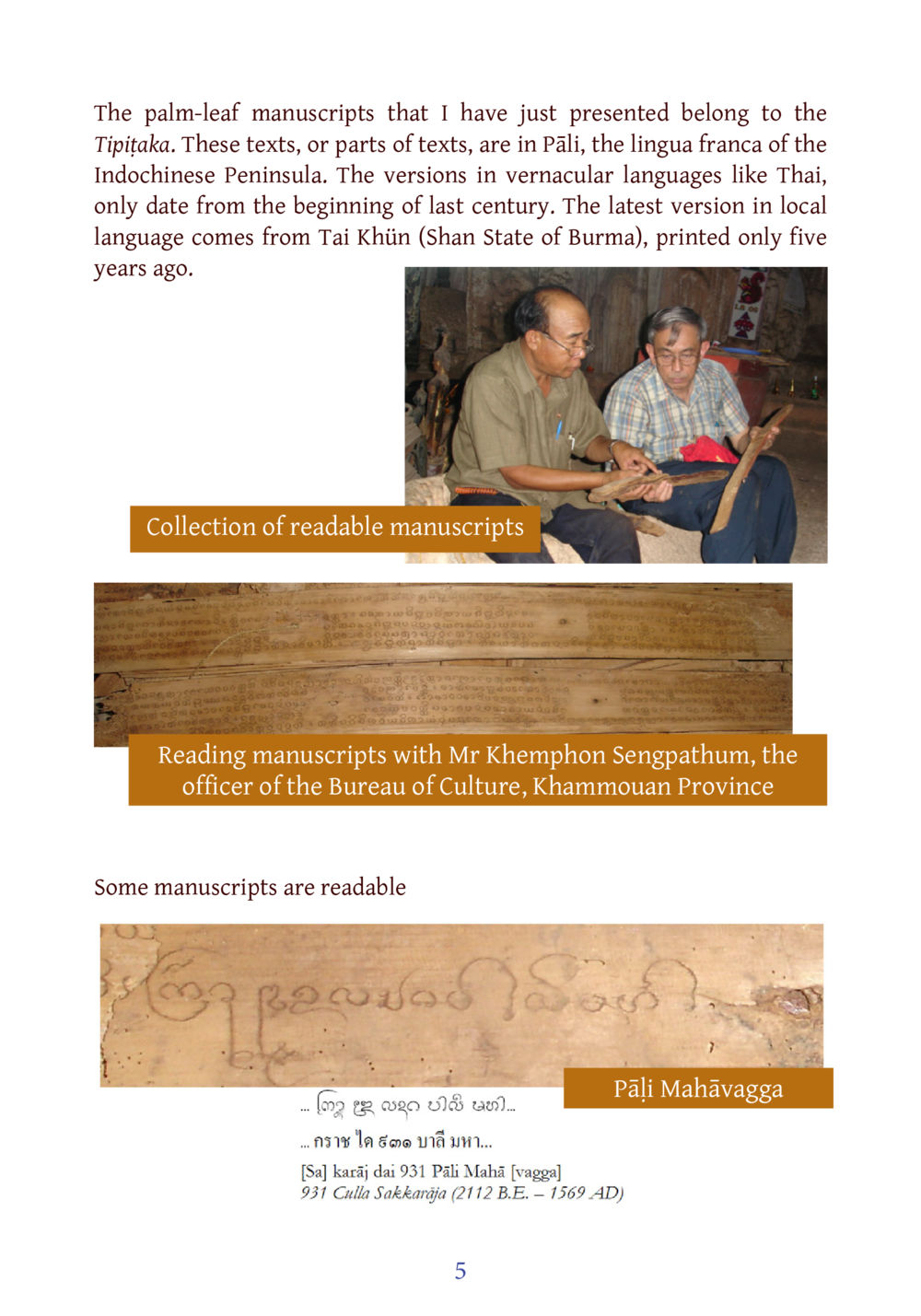Exploring the Tipiṭaka Manuscripts : หน้า 26/141
DIRI Journal : หน้า 26/141 An overview of the Tipiṭaka palm-leaf manuscripts in Pāli and their vernacular translations, with insights from cultural readings in Khammouan Province.
3 ครั้ง

สรุปเนื้อหา
The palm-leaf manuscripts presented belong to the Tipiṭaka, primarily in Pāli, the lingua franca of the Indochinese Peninsula. While the local vernacular translations like Thai emerged only in the early 20th century, the most recent version was produced just five years ago in Tai Khûn from the Shan State of Burma. The significance of these manuscripts is further highlighted during reading sessions with Mr. Khemphon Sengpatham from the Bureau of Culture in Khammouan Province, showcasing the accessibility and readability of certain texts.
หัวข้อประเด็น
-Tipiṭaka manuscripts
-Pāli language
-Vernacular translations
-Cultural significance
-Khammouan Province readings
ข้อความต้นฉบับในหน้า
The palm-leaf manuscripts that I have just presented belong to the Tipiṭaka. These texts, or parts of texts, are in Pāli, the lingua franca of the Indochinese Peninsula. The versions in vernacular languages like Thai, only date from the beginning of last century. The latest version in local language comes from Tai Khûn (Shan State of Burma), printed only five years ago.
Reading manuscripts with Mr Khemphon Sengpatham, the officer of the Bureau of Culture, Khammouan Province
Some manuscripts are readable
... ḷaṙi Mahāvagga
Cula Sakkarāja (2112 B.E. - 1569 AD)
หน้าหนังสือทั้งหมด

1

2

3

4

5

6

7

8

9

10

11

12

13

14

15

16

17

18

19

20

21

22

23

24

25

26

27

28

29

30

31

32

33

34

35

36

37

38

39

40

41

42

43

44

45

46

47

48

49

50

51

52

53

54

55

56

57

58

59

60

61

62

63

64

65

66

67

68

69

70

71

72

73

74

75

76

77

78

79

80

81

82

83

84

85

86

87

88

89

90

91

92

93

94

95

96

97

98

99

100

101

102

103

104

105

106

107

108

109

110

111

112

113

114

115

116

117

118

119

120

121

122

123

124

125

126

127

128

129

130

131

132

133

134

135

136

137

138

139

140

141
หนังสือที่เกี่ยวข้อง
Load More
